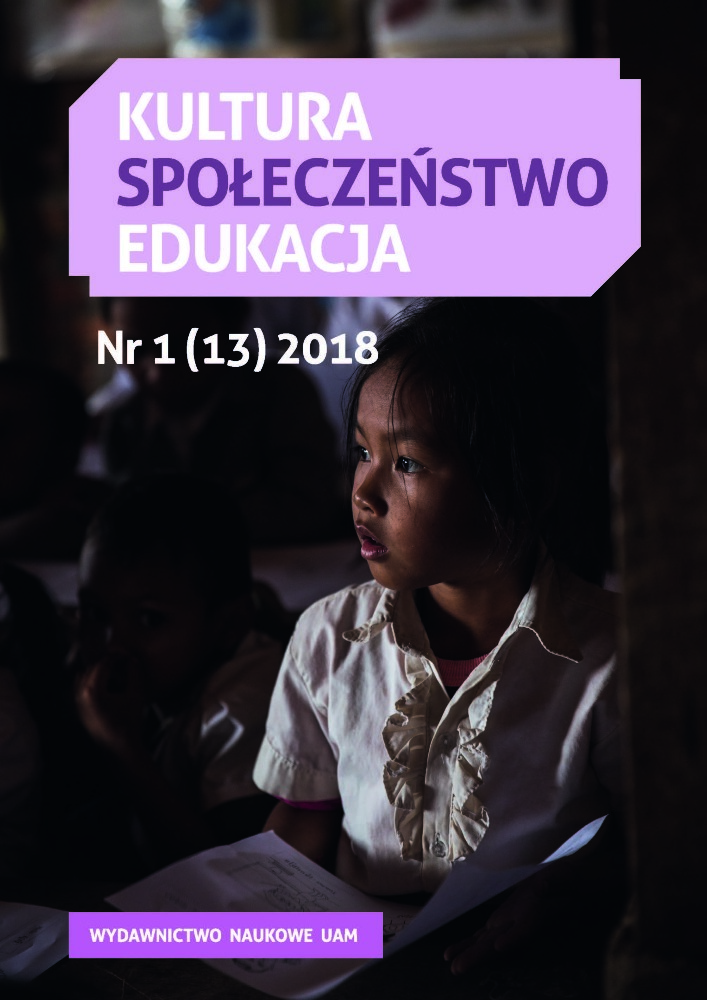Abstrakt
The article examines the breakthrough of Bedouin women in Northern Israel, based on the testimony of twenty young Bedouin women who did not accept the ‘traditional’ role of the woman, in the family in particular and in Bedouin society in the village in general. This group of women succeeded in breaking the boundaries of the tribe and struggled for the right to complete high school and even to study in the institutions of higher education.
Bibliografia
Abu Rabia S. (2000). Differences in Attitudes on the Dropping out of Girls from the Bedouin Schools in the Negev, Master Thesis. Negev.
Abu-Saad I. (1991). Towards an understanding of minority education in Israel: The case of the Bedouin Arabs of the Negev. “Comparative Education” 27(2), pp. 235–242.
Abu-Saad I. (1995). Bedouin Arab education in the context of radical social change: What is the future? “Compare” 25 (2), pp. 149–160.
Abu-Saad I. (1997). The education of Israel’s Bedouin: background and prospects. “Israel Studies” 2, pp. 21–39.
Abu-Saad I., Abu-Saad K., Lewando-Hundt G., Forman R.M., Belmaker I., Berendess, W.H., et al. (1998). Bedouin Arab mothers’ aspirations for their children’s education in the context of radical change. “Teaching and Teacher Education” 18 (4), pp. 347–359.
Adler S. (1995). The Bedouin women and the income stipend in the polygamous family. [In:] P. Radai, K. Shalev, M. Liven-Koby (eds). The Status of the Woman in Society and Law. Jerusalem, Tel Aviv, pp. 133–147.
Alatuna M. (1993). The Relationship between the Status of the Bedouin Woman and Her Self-Image and Psychological Wellbeing. Master Thesis. Ramat Gan.
Anker A. (1995). Employment of Bedouin Women in Urbanizing Bedouin Society in the Negev. Seminar Paper. Negev.
Bar-Tzvi S. (1991). Tradition of Judgment of the Bedouin of the Negev, Tel Aviv.
Ben-David Y. (1988). Tribe and Family in New Bedouin Society: The Case of Kaseife. “Lists on the Topic of the Bedouin” No. 19. Midreshet Sde Boker.
Ben-David Y. (1993). Bedouin Settlement in the Negev: Policy and Reality, 1967–1992. Jerusalem.
Ben-David Y. (1993). The Bedouin Community in the Negev: Policy and Reality, 1967–1992. Jerusalem.
Ben-David Y. (1995).The land conflict between the Bedouin of the Negev and the State: historical, legal, and contemporary aspects. “Land” 40, pp. 61–91.
Fenster T. (1999). Space and gender: cultural roles of the forbidden and the permitted. “Society and Space” 17, pp. 227–246.
Kama B. (1984). The status of the Arab woman in Israel. Jerusalem.
Kassam F. (2002). Trailbreakers pay the price: on Bedouin women and their struggle for the right of education. “Aspects” 22, pp. 72–83.
Marks E. (1971). Division of roles between spouses among the Bedouin in the Negev. “Lists on the Topic of the Bedouin” 3, Midreshet Sdeh Boker, pp. 3–13.
Meir A. (1994). Territorial formation among the Bedouin in the Negev in the transition from nomadism to permanent settlement. “Researches in the Geography of the Land of Israel” 14, pp. 71–95.
Meir A., Barnea D. (1986). The Development of the Bedouin Educational System in the Negev. Beer Sheva.
Mosokona-Lerman B. (2001). The woman who created workplaces. “Maariv” (Supplement), pp. 56–58.
Pessate-Schubert E. (1999). The Private Sphere and the Public Sphere: Case Analysis of Learning Mothers in Israel Society, Doctoral Dissertation. Jerusalem.
Pessate-Schubert E. (2000). ‘Education is Our Destruction’: Dialogue between Personal Building and Social Building of the Meaning of Higher Education in the Lives of Bedouin Women in the Negev (Research Report). Negev.
Rabinovitz D. (1995). The twisted journey to the saving of brown women. “Theory and Criticism” 7, pp. 5–19.
Rimlet E. (1991). Patterns of image in the services and patterns of use of employment of Bedouin, in light of their exposure to the development process: the case of Salameh Village, “Lists on the Topic of the Bedouin” 22, Midreshet Sdeh Boker, pp. 52–58.
Simons G. (1995). The feminist coalition in the border region. “Theory and Criticism” 7, pp. 20–29.
Tal S. (1993). Towards the promotion and integration of the Bedouin population in the Negev in Israeli society. “Lists on the Topic of the Bedouin” 24. Midreshet Sdeh Boker.
Licencja
Prawa autorskie (c) 2018 Adel Ayada

Utwór dostępny jest na licencji Creative Commons Uznanie autorstwa – Bez utworów zależnych 4.0 Międzynarodowe.
